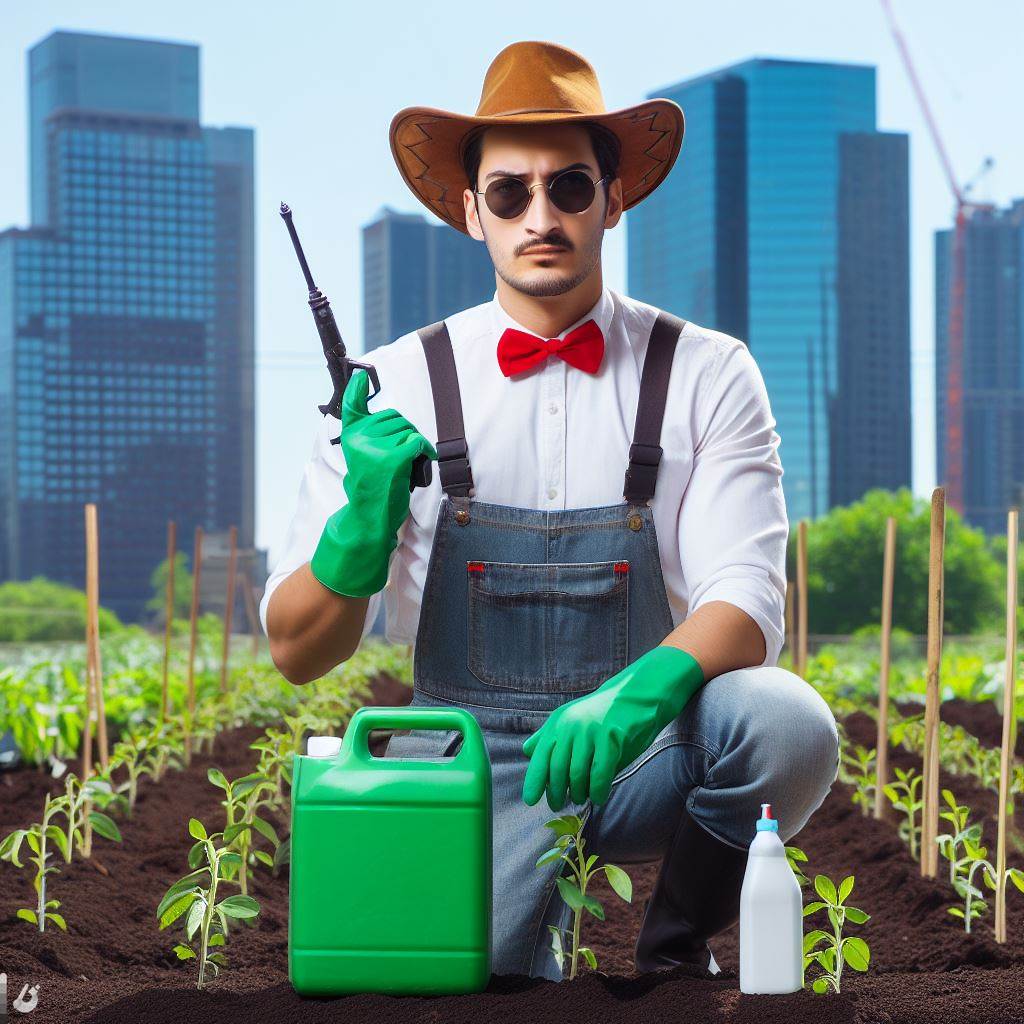Introduction
Pesticide regulations play a crucial role in protecting human health and the environment.
Global policy shifts have been observed in pesticide regulations to address emerging challenges.
In recent years, the landscape of pesticide regulations has undergone transformative global shifts, reflecting an evolving paradigm in environmental stewardship and public health.
This intricate tapestry of regulatory changes not only underscores the international community’s commitment to sustainable agricultural practices but also signals a collective recognition of the profound impact pesticides can have on ecosystems and human well-being.
This comprehensive exploration delves into the multifaceted dimensions of these global policy shifts, dissecting the motivations, implications, and challenges inherent in the dynamic interplay between regulatory frameworks and the agricultural sector.
From heightened awareness of ecological consequences to the imperative of safeguarding food supplies, the journey through pesticide regulations promises insights into a pivotal section in the ongoing narrative of responsible and resilient global agriculture.
Historical Context of Pesticide Regulations
Evolution of pesticide use and its impacts on the environment and human health
Pesticide use has evolved over time, leading to significant impacts on the environment and human health.
The widespread application of pesticides has resulted in the pollution of air, water, and soil.
Exposure to pesticides has been linked to various health issues, including cancer, reproductive problems, and neurodevelopmental disorders.
Increased use of pesticides, especially synthetic ones, has raised concerns about their long-term effects on ecosystems.
Emergence of regulatory frameworks to control pesticide usage
In response to the growing concerns, regulatory frameworks were developed to control pesticide usage.
These frameworks aimed to establish guidelines for pesticide registration, labeling, and safe use.
Regulations also sought to set maximum residue limits (MRLs) in food and establish guidelines for pesticide application.
Initial regulations focused on controlling the quality, safety, and efficacy of pesticides.
However, they often lacked comprehensive assessment of environmental and health risks.
Transform Your Agribusiness
Unlock your farm's potential with expert advice tailored to your needs. Get actionable steps that drive real results.
Get StartedEarly international efforts to address pesticide regulation
In the early 20th century, international efforts began to address pesticide regulation.
The International Plant Protection Convention (IPPC) was established in 1951 to coordinate international cooperation in plant protection.
The IPPC played a crucial role in harmonizing pesticide regulations and facilitating the exchange of information between countries.
The World Health Organization (WHO) also initiated programs to promote pesticide safety and regulation.
In fact, the historical context of pesticide regulations reveals the evolution of pesticide use and its impacts on the environment and human health.
The emergence of regulatory frameworks aimed to control pesticide usage, improve pesticide quality, and set safety guidelines.
International efforts, such as the International Plant Protection Convention (IPPC) and the World Health Organization (WHO), played important roles in coordinating global cooperation and promoting pesticide safety.
However, early regulations often lacked comprehensive assessment of environmental and health risks associated with pesticide use.
Read: Water Use Laws: Impact on US Farmers
Analysis of Global Policy Shifts on Pesticide Regulations
Overview of the key reasons behind the policy shifts
- Increasing public concern about the health and environmental impacts of pesticides.
- Recognition of the need to protect biodiversity and ecosystems from pesticide-related harm.
- Growing evidence of long-term effects on human health due to exposure to pesticides.
- Pressure from advocacy groups and non-governmental organizations to tighten regulations.
- International agreements and conventions promoting sustainable agriculture and reducing pesticide use.
The role of scientific research in shaping new regulations
- Scientific studies provide evidence of the adverse effects of pesticides, influencing policymakers.
- Research helps identify safer alternative methods and technologies for pest management.
- Impact assessments contribute to understanding the consequences of pesticide use on ecosystems.
- Scientific expertise guides the development of risk assessment frameworks and safety standards.
- Ongoing research supports the continuous refinement and improvement of pesticide regulations.
Case studies highlighting specific countries and regions with notable policy changes
- European Union: Implementation of the Sustainable Use of Pesticides Directive, promoting integrated pest management and reducing pesticide risks.
- United States: Introduction of the Pesticide Registration Improvement Act, strengthening the regulation of pesticide products.
- Brazil: Adoption of the National Policy for Agroecology and Organic Production, encouraging agroecological practices and reducing pesticide use.
- China: Implementation of the Action Plan on Pesticide Reduction, aiming to limit pesticide application and enhance ecological sustainability.
- Africa: Increased emphasis on organic farming and pesticide reduction through initiatives such as the Ecological Organic Agriculture Initiative.
These case studies demonstrate the varying approaches taken by countries and regions to address pesticide regulation.
While some focus on stricter regulations and reducing pesticide use, others emphasize a shift towards sustainable, organic alternatives.
In essence, global policy shifts on pesticide regulations are driven by increasing awareness of the environmental and health risks associated with pesticide use.
Scientific research plays a pivotal role in shaping new regulations by providing evidence, identifying alternatives, and guiding risk assessment.
Case studies across different countries and regions highlight the diverse strategies employed to address pesticide concerns.
As global efforts towards sustainable agriculture intensify, ongoing research and policy adaptations will be crucial to ensure effective pesticide regulation and the protection of both human health and the environment.
Read: Tech in Agriculture: Regulatory Landscape
Impact of Pesticide Regulation Changes on Agriculture
Examination of the challenges faced by farmers due to new regulations
- Higher costs for acquiring and applying alternative pest control methods.
- Difficulty in finding effective alternatives to banned or restricted pesticides.
- Increased risk of crop damage and reduced yields.
- Limited access to essential crop protection tools, impacting pest management strategies.
- Lack of knowledge and understanding of newer, eco-friendly pest control methods.
- Additional time and effort required to comply with complex regulatory requirements.
Analysis of the innovative approaches adopted by farmers to comply with regulations
- Implementation of integrated pest management (IPM) practices to minimize pesticide usage.
- Utilizing crop rotation and cover crops to enhance natural defenses against pests.
- Exploring biopesticides and biotechnology for targeted pest control and resistance management.
- Investing in precision agriculture technologies for more efficient and precise pesticide application.
- Adopting organic farming methods to meet consumer demand for pesticide-free produce.
- Partnerships and knowledge-sharing platforms to help educate farmers on alternative pest control strategies.
Consideration of the overall benefits and drawbacks of stricter pesticide regulations
Benefits
- Reduced health risks for farmers, consumers, and ecosystems.
- Protection of biodiversity and natural resources.
- Promotion of sustainable agricultural practices.
- Enhanced food safety and quality.
Drawbacks
- Higher production costs for farmers, potentially leading to increased food prices.
- Limited pest control options, potentially resulting in crop losses.
- Greater reliance on imported produce not subject to the same regulations.
- Challenges in implementing and enforcing regulations across different regions and countries.
In a nutshell, the impact of pesticide regulation changes on agriculture is undoubtedly significant.
Farmers face various challenges in complying with stricter regulations, such as higher costs and limited alternatives.
However, innovative approaches, like integrated pest management and precision agriculture, offer potential solutions.
It is crucial to consider the overall benefits, like improved health and sustainability, while acknowledging the drawbacks, including production costs and limited options.
Striking a balance between regulation and agricultural productivity is essential for a sustainable and responsible approach to pest control in the global agricultural industry.
Read: Organic Farming Regs: What’s New in 2024?

Future Trends and Predictions
Discussion of potential future developments and regulatory changes
As pesticide regulations continue to evolve, it is important to consider potential future developments and regulatory changes that may shape the industry.
The following are some key factors to consider:
Showcase Your Farming Business
Publish your professional farming services profile on our blog for a one-time fee of $200 and reach a dedicated audience of farmers and agribusiness owners.
Publish Your Profile- The rise of environmentally-friendly alternatives: With growing concerns over the ecological impact of pesticides, there is likely to be an increased emphasis on developing and promoting environmentally-friendly alternatives. This could include the use of biological controls and innovative technologies.
- Stricter residue limits: As consumer awareness and demand for pesticide-free products grow, there may be a push for stricter residue limits. This can lead to more extensive testing and regulatory measures to ensure compliance.
- Focus on integrated pest management (IPM): IPM approaches, which aim to minimize pesticide use by integrating various pest control techniques, are gaining traction. In the future, we can expect more regulations promoting the adoption of IPM strategies.
- Increased transparency and public involvement: As public concern about pesticide use rises, regulatory agencies may face pressure to increase transparency and involve the public in the decision-making process. This can lead to more public consultations and input in future regulatory changes.
- Global harmonization of regulations: As trade and commerce become increasingly globalized, there is a need for harmonization of pesticide regulations across different countries. International collaborations and agreements can play a crucial role in shaping future policies.
Exploration of the impact of emerging technologies on pesticide regulation
Emerging technologies have the potential to revolutionize the way pesticides are regulated.
Some of the key impacts include:
- Advancements in precision agriculture: Precision agriculture technologies, such as drones and sensor systems, can provide more accurate and targeted application of pesticides. This can lead to reduced overall pesticide use and more efficient regulation.
- Development of biopesticides: With advancements in biotechnology, the development and use of biopesticides are likely to increase. These biological agents can offer effective pest control with minimal environmental impact, influencing regulatory priorities.
- Remote monitoring and data collection: Remote monitoring systems can provide real-time data on pesticide use, allowing regulatory agencies to have better control and enforcement. This can improve compliance and reduce the risk of overuse or misuse of pesticides.
- Emerging information technologies: Information technologies, such as blockchain, can enhance traceability and transparency in the pesticide supply chain. This can aid in verifying compliance with regulations and preventing illegal trade.
Consideration of the role of international collaborations and agreements in shaping future policies
International collaborations and agreements play a significant role in shaping future pesticide regulations. Some important aspects to consider include:
- Sharing of scientific knowledge and best practices: Collaborations allow for the exchange of scientific knowledge and best practices between countries. This can help in the development of evidence-based pesticide regulations.
- Harmonization of standards: International agreements can promote harmonization of pesticide standards, making it easier for companies to comply with regulations in multiple countries. This can reduce trade barriers and improve market access.
- Capacity building and technical assistance: Collaboration can facilitate capacity building and technical assistance, particularly for developing countries that may lack resources and expertise in pesticide regulation. This can lead to more effective implementation of regulations.
- Addressing global challenges: International collaborations are essential to address global challenges posed by pesticide use, such as pesticide resistance and cross-border environmental issues. By working together, countries can find innovative solutions and implement more robust regulations.
In summary, the future of pesticide regulations will likely be shaped by various factors, including potential developments, emerging technologies, and international collaborations.
It is crucial for regulatory agencies and stakeholders to anticipate these trends and work together to ensure sustainable and effective pesticide management.
Read: Climate Change Policy: Effects on Farming
Conclusion
Over the years, there has been a significant shift in global pesticide regulations, with stricter guidelines being implemented.
Governments worldwide have recognized the potential risks associated with these chemicals and are taking action to protect the environment and human health.
The implications of these policy shifts are far-reaching.
For the farming industry, it means adopting alternative pest management strategies, investing in research and development of safer alternatives, and complying with the new regulations.
This may lead to increased costs and challenges in maintaining crop productivity.
However, it is important to prioritize sustainability and prioritize the long-term health of the ecosystem and human populations.
The decline of bees, the spread of pesticide residue, and the potential health risks linked to exposure demand immediate action.
For society as a whole, the shift towards stricter pesticide regulations ensures a safer food supply, healthier ecosystems, and a reduced impact on human health.
It promotes sustainable agriculture practices that can protect biodiversity and ensure a better future for generations to come.
It is crucial for stakeholders – farmers, policymakers, scientists, and consumers – to collaborate and work towards practical solutions that balance the need for agricultural productivity with the imperative of environmental preservation.
Only through collective efforts can we navigate these regulatory shifts and create a sustainable and resilient farming industry.




